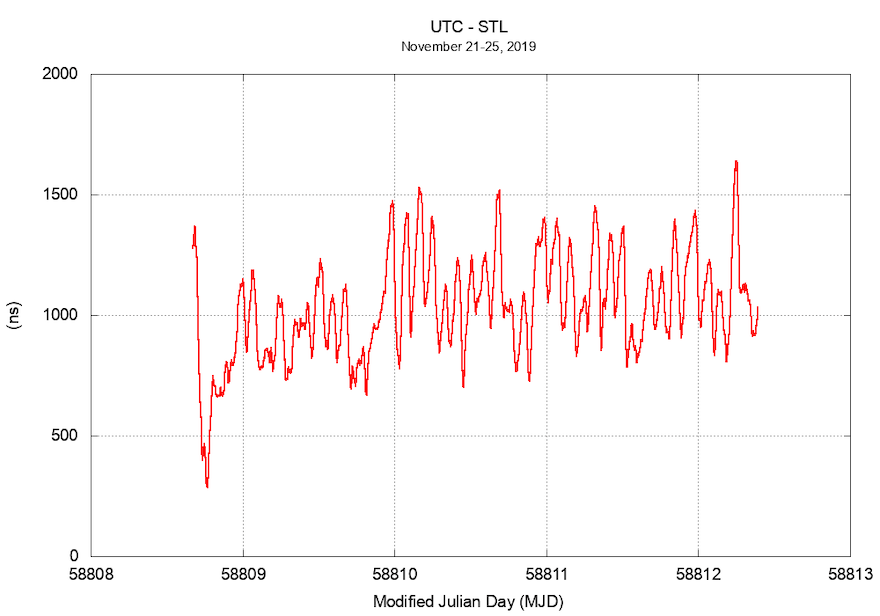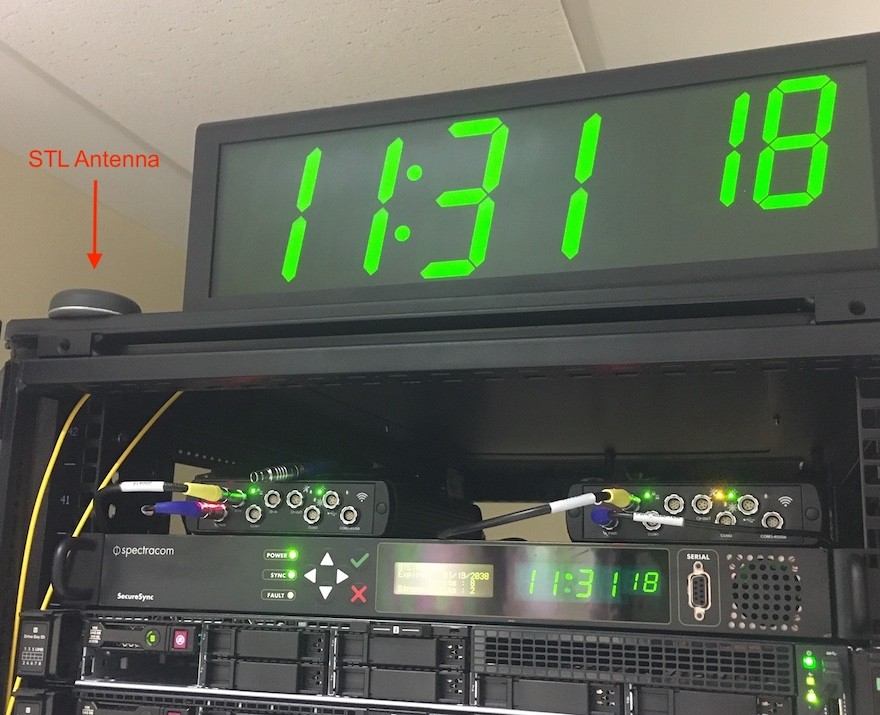A recent test demonstrated that the combination of the SecureSync time server manufactured by Orolia and the Satellite Time and Location (STL) service provided by Satelles can deliver extremely accurate timing as compared to Coordinated Universal Time (UTC). The solution for resilient timing is available for commercial and civil government applications worldwide, to protect national critical infrastructure and to deliver precise timing in GNSS-challenged environments.
The test was conducted at GMV offices in Tres Cantos near Madrid, Spain, where a UTC timescale is maintained based on two highly stable atomic clocks, which served as “truth reference” for the test. The clocks are steered to UTC by means of GNSS common-view time transfer to UTC (PTB), the national realization of UTC in Germany. The GNSS receiver chains used for time transfer between GMV and PTB are fully calibrated to account for signal delays across the GNSS antenna, the antenna cable, and the receiver itself. This maintains GMV’s UTC realization in very close alignment with true UTC, with deviations of just a few nanoseconds, as verified from BIPM’s Circular T.
The atomic clocks are installed in a rack in the basement, one level below the ground floor, and close to the north-facing external walls of the building. The indoor conditions at the rack location can be roughly characterized by marginal availability of GNSS signals and cellular phone service. To test STL capabilities in these conditions, a SecureSync unit was installed in the rack, connected to an Iridium patch antenna placed on top of the rack, as shown in the photo.
To measure the deviation of STL from UTC, the 1PPS signal from the SecureSync unit was compared against the 1PPS from GMV’s UTC timescale, using a Time Interval Counter (TIC). Such 1PPS time differences were recorded over four days from November 21-25, 2019; see Figure 1. Maximum deviations from UTC are below 1.5 microseconds. After an initial settling period, the STL UTC time has an RMS noise of ~300 nanoseconds (ns) with a ~1000 ns offset. This offset can be calibrated out to deliver even better performance, according to the two companies.

Accurate and resilient timing is essential for critical applications worldwide. Timing is the fundamental requirement to synchronize operations, yet it can be challenging to establish and maintain accurate timing in multiple locations and in GNSS-compromised environments.
The Orolia GNSS-reference time synchronization equipment contributed to timing resilience in these ways:
- High-quality OCXO and atomic internal holdover oscillators to maintain precise time and frequency during long periods of GNSS outage.
- Anti-jam and anti-spoofing antennas, DSP filters, and detection software to detect and mitigate interference.
- Alternative reference signals such as STL to augment GNSS when it is not available.
STL, though less accurate than GNSS, has complementary advantages:
- Much harder to disrupt: transmitted from Low Earth Orbit (LEO) satellites 800 km above the earth, the signal is over 30 dB stronger than all the GNSS signals transmitted from 20,000 km.
- STL can be used indoors, an advantage over most antenna solutions that require rooftop access.
- Resistant to cyberattack: the signal is secure so that no bad actor can fake the signal.
- Indoor operation: this greatly simplifies installation and brings UTC synchronization to locations where it was previously impractical to install.
- UTC traceability is maintained by Satelles via redundant ground stations and monitoring around the globe.
GMV’s WANTime is a time service for the city of Madrid, Spain, distributed using the White Rabbit network protocol over optical fiber. A pilot customer of the service is currently the Madrid Stock Exchange (Bolsa de Madrid), connected to GMV’s datacenter by a network link of around 50 kilometers.






